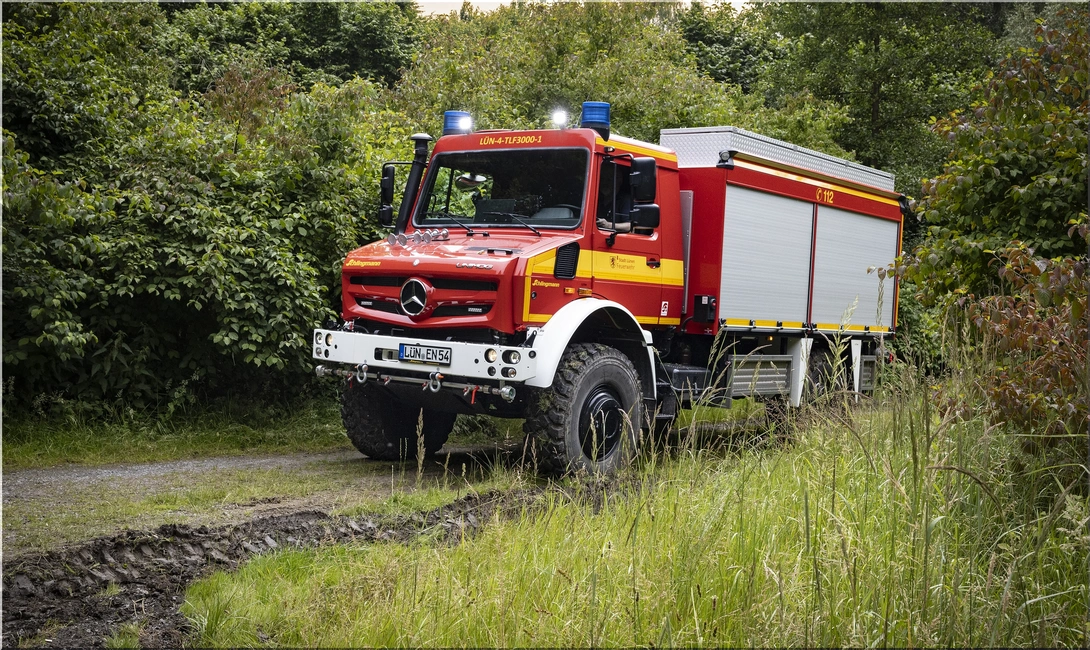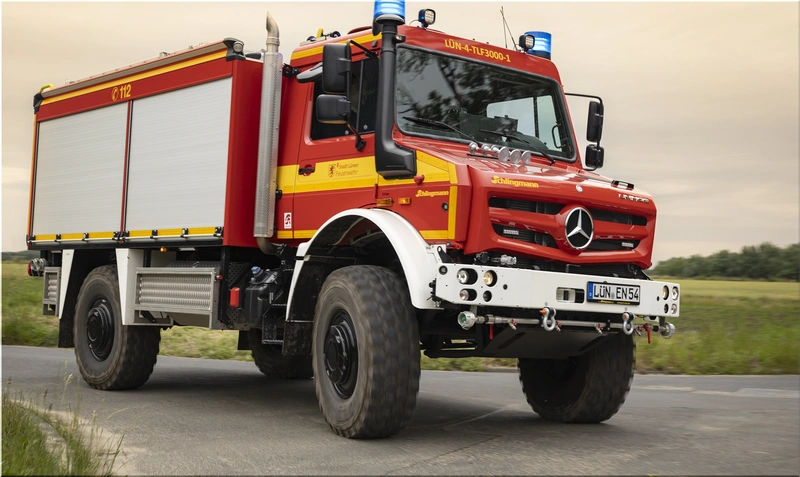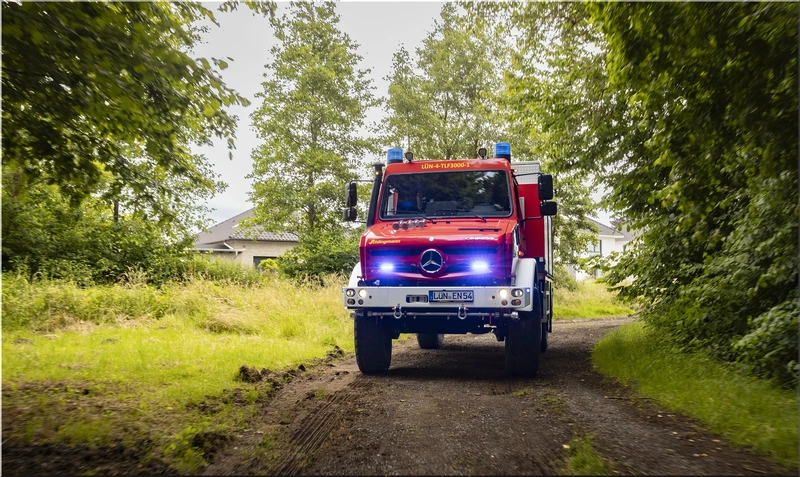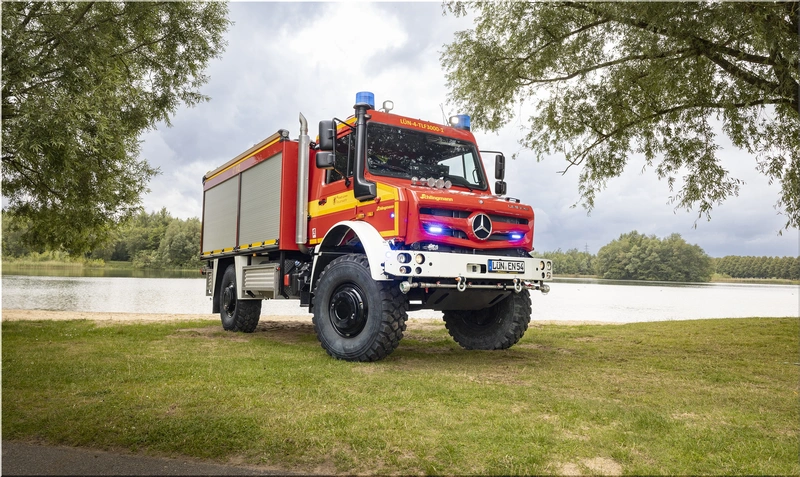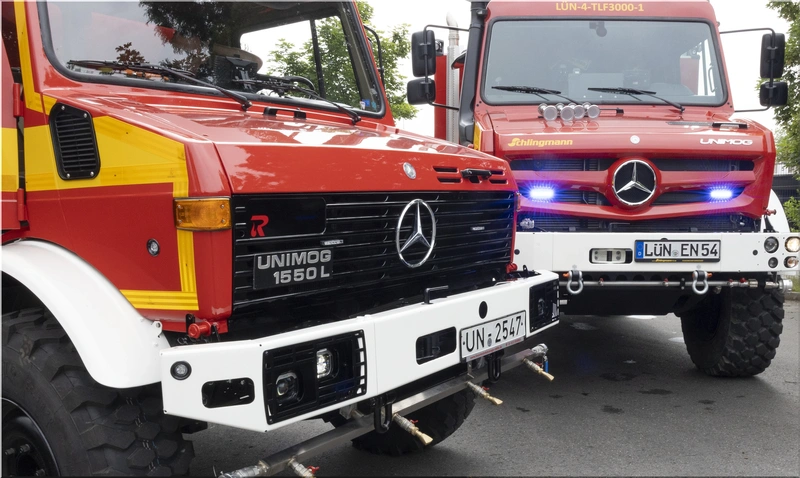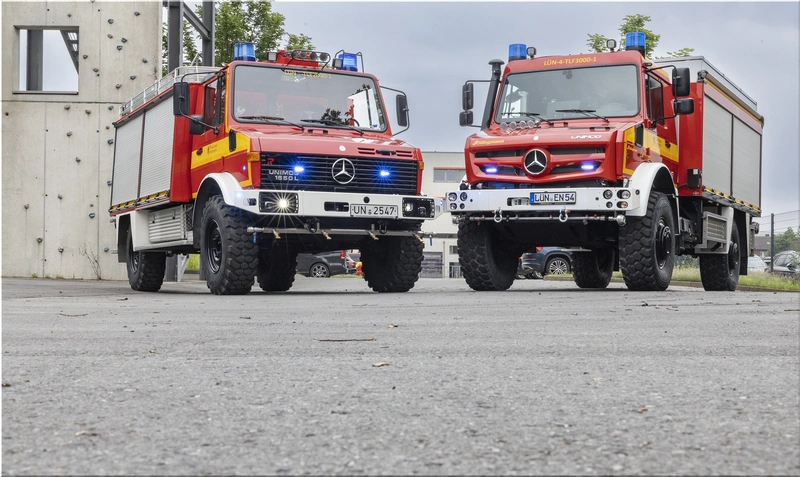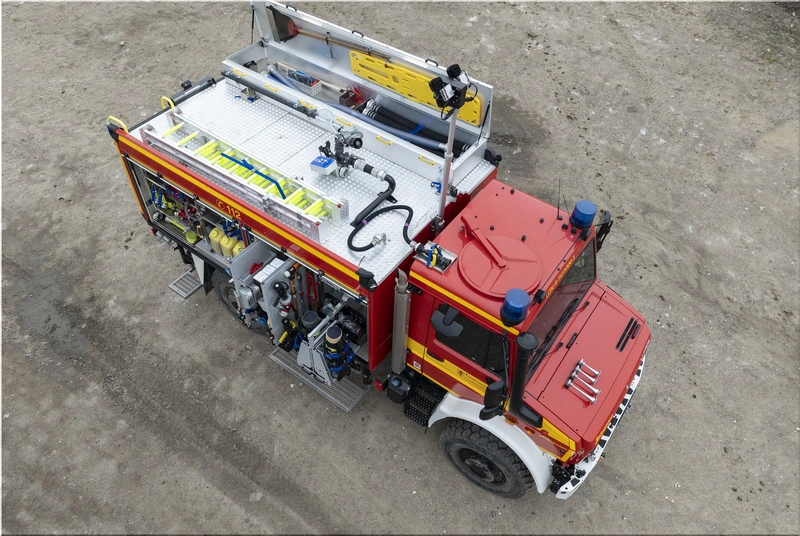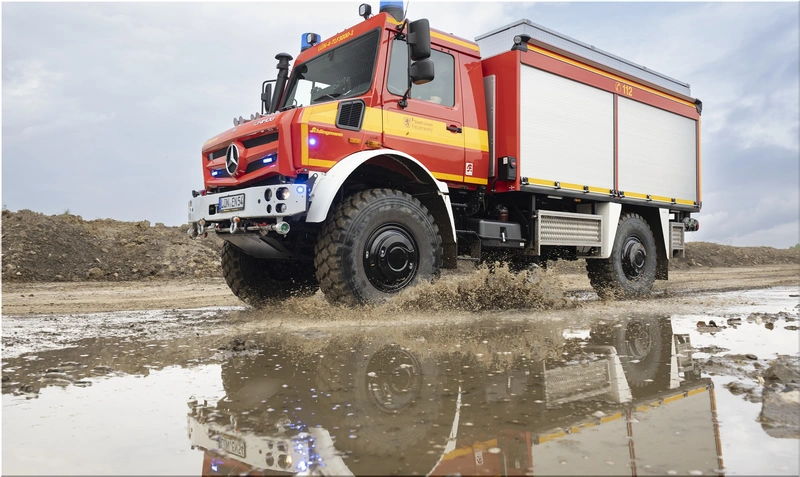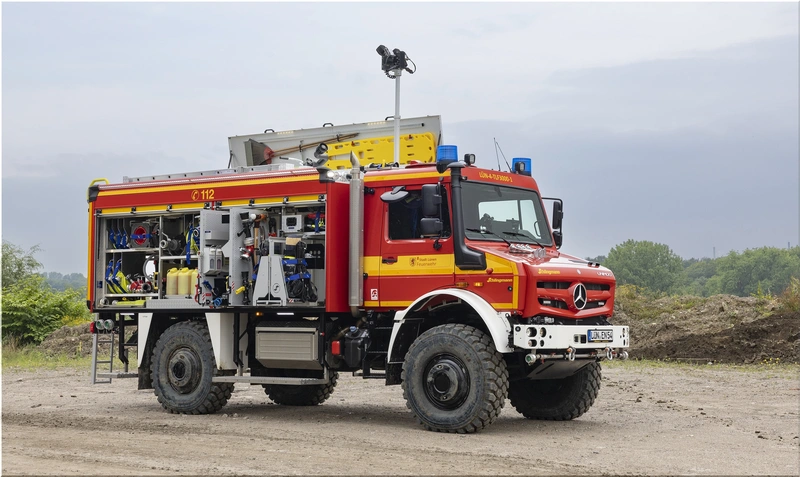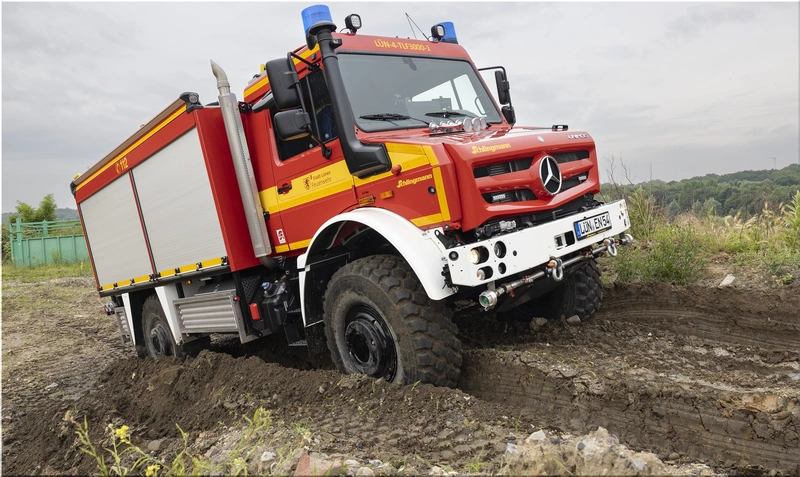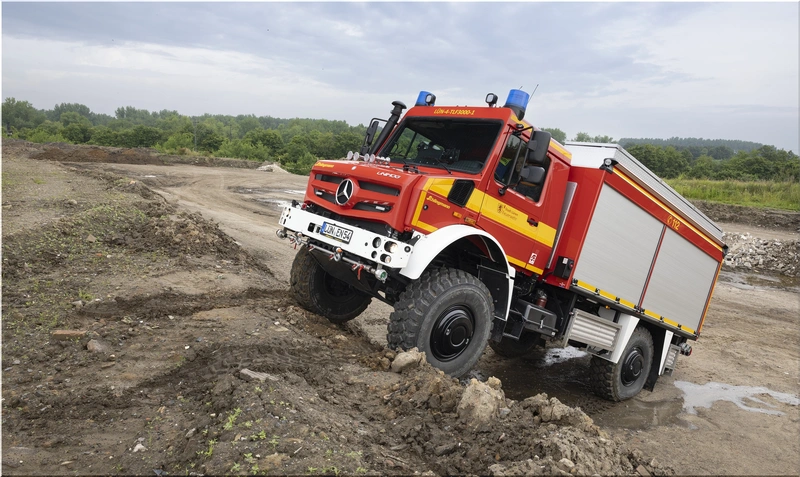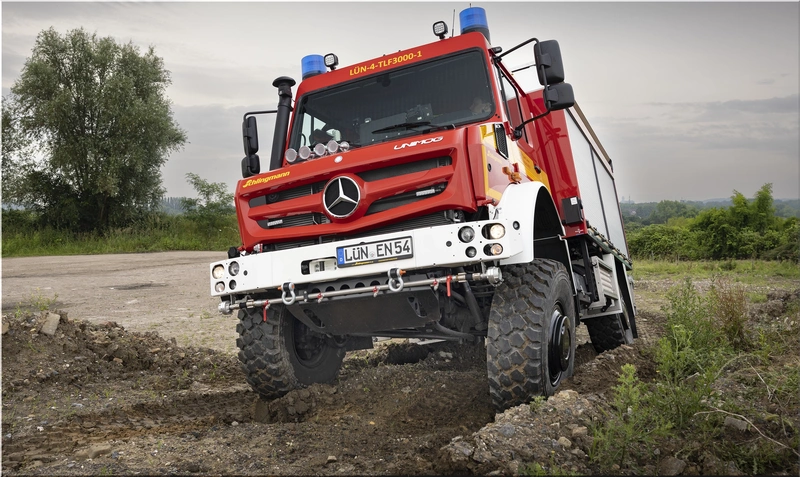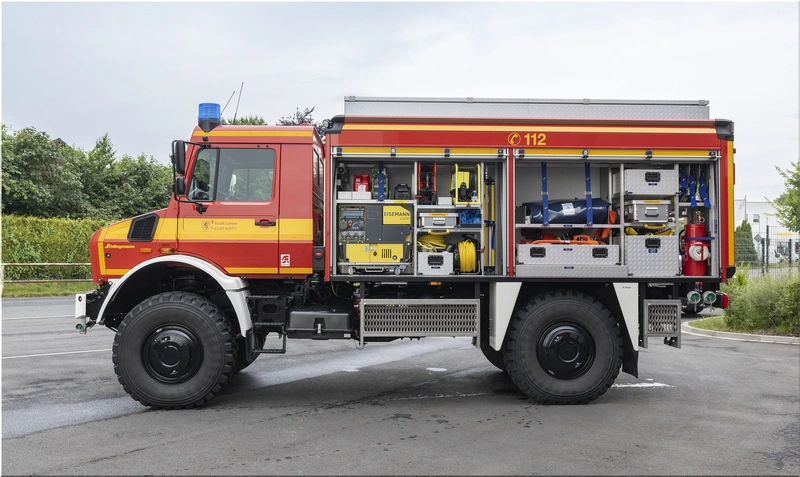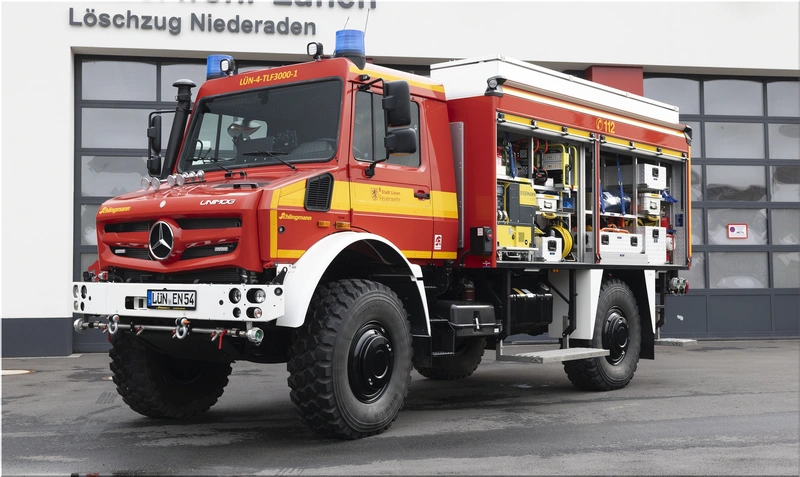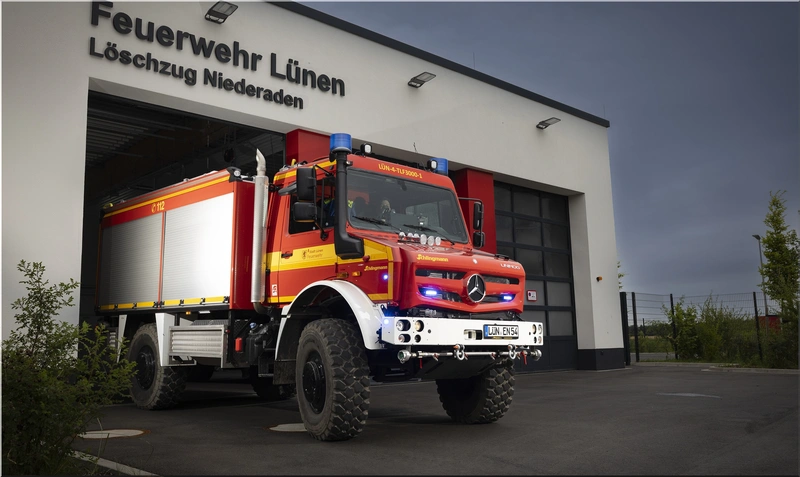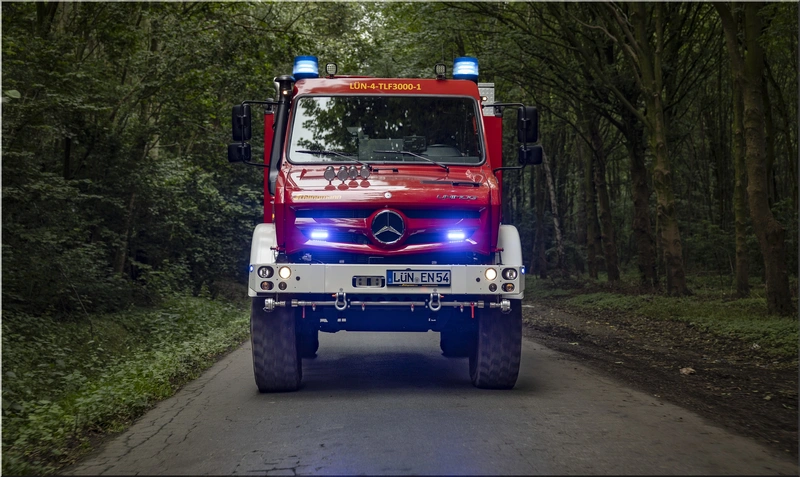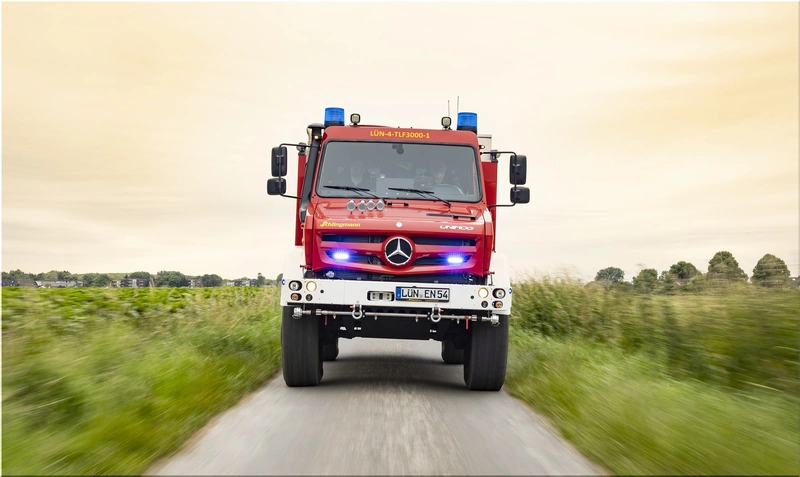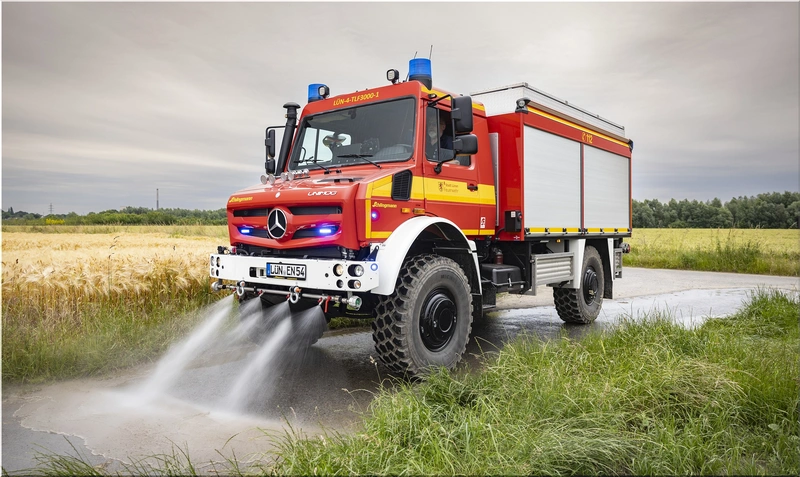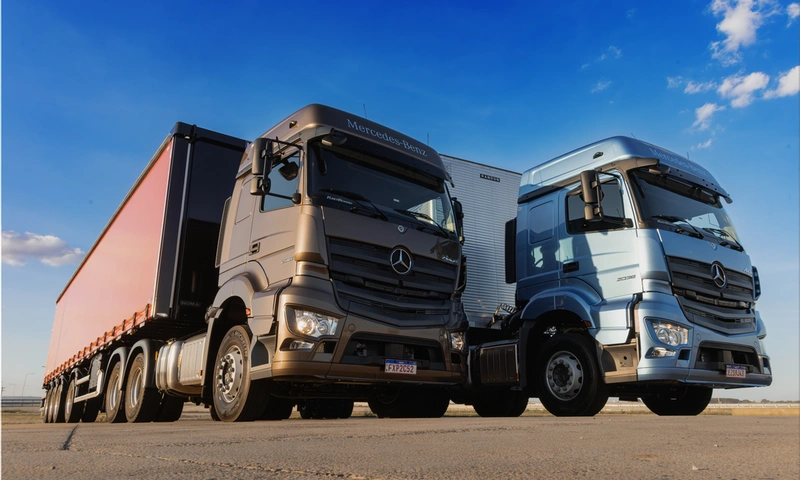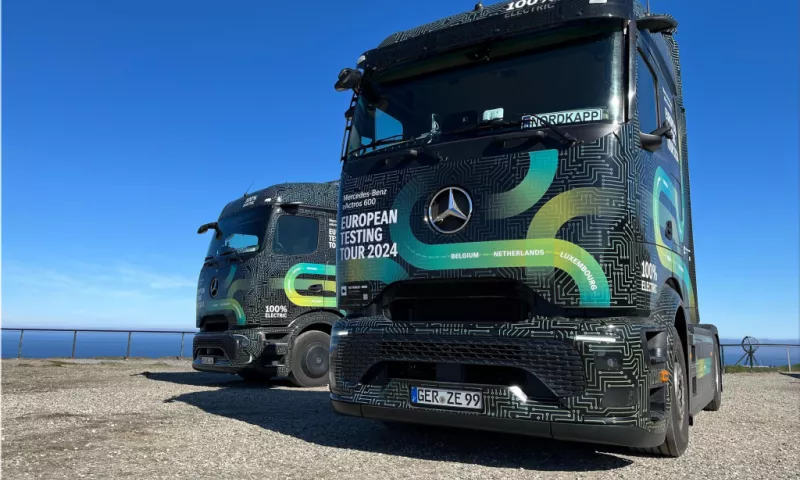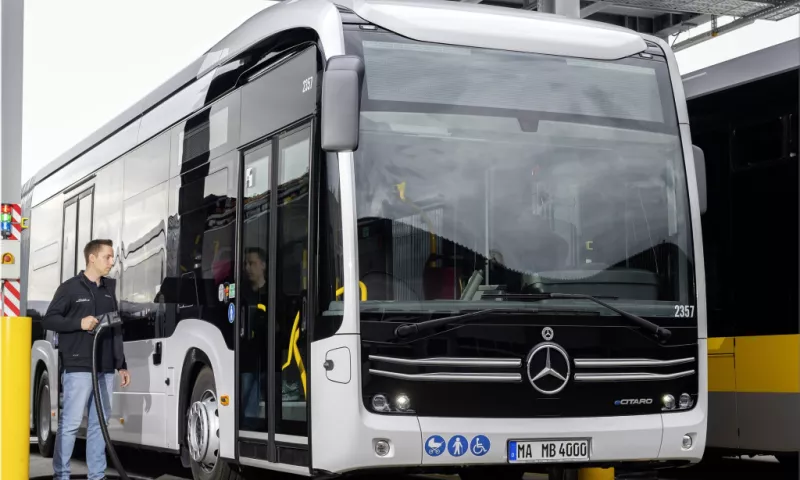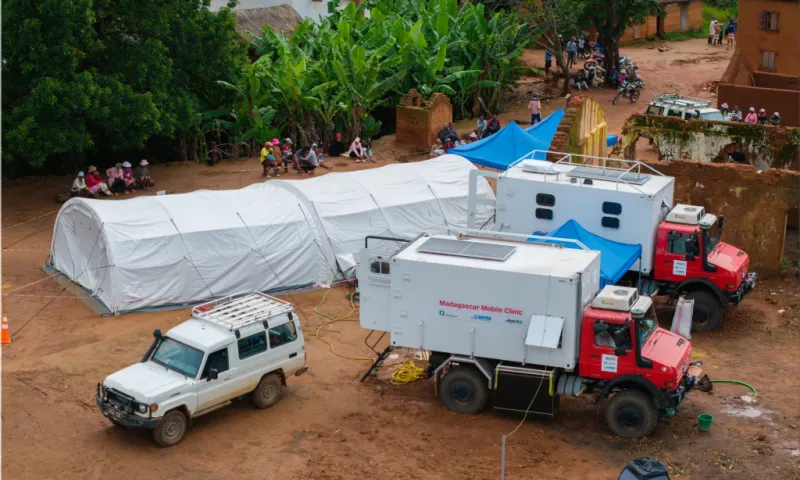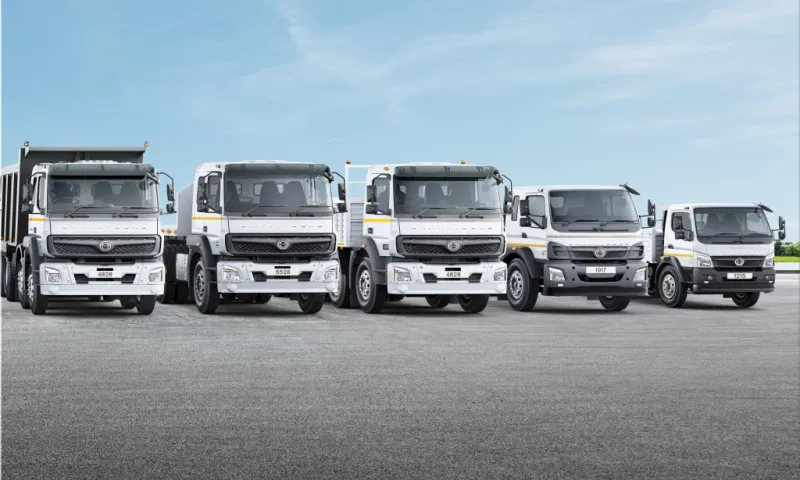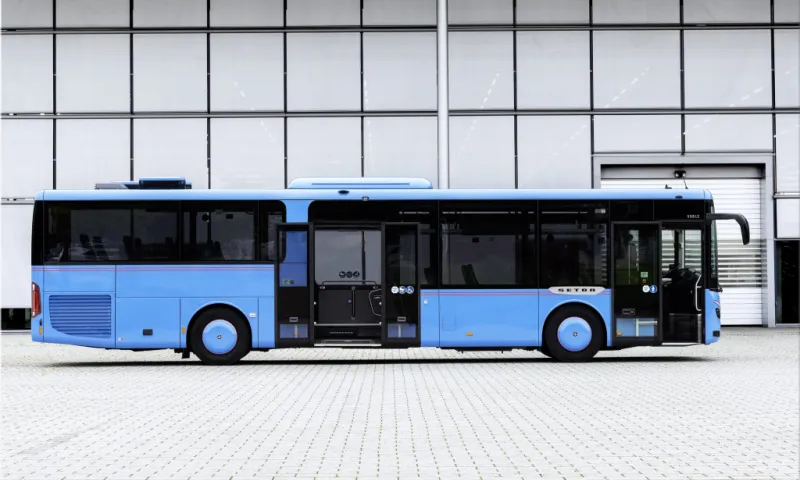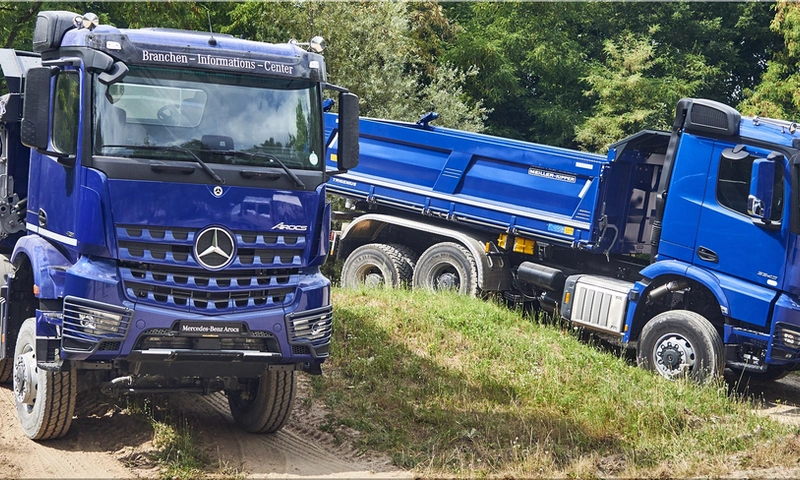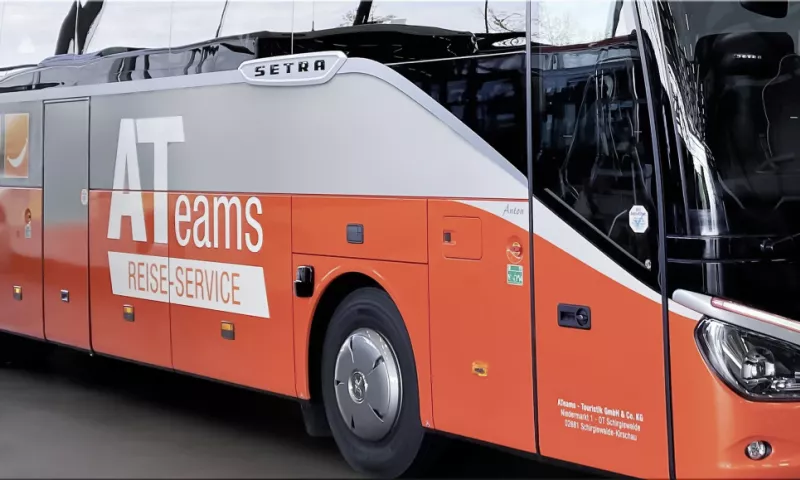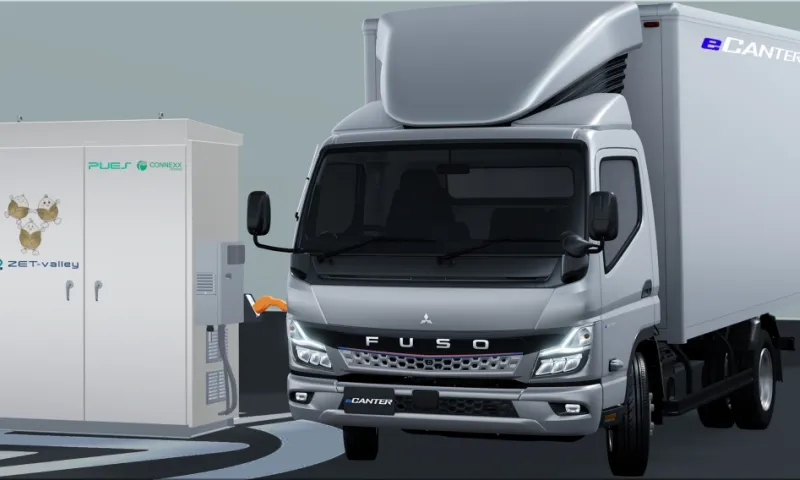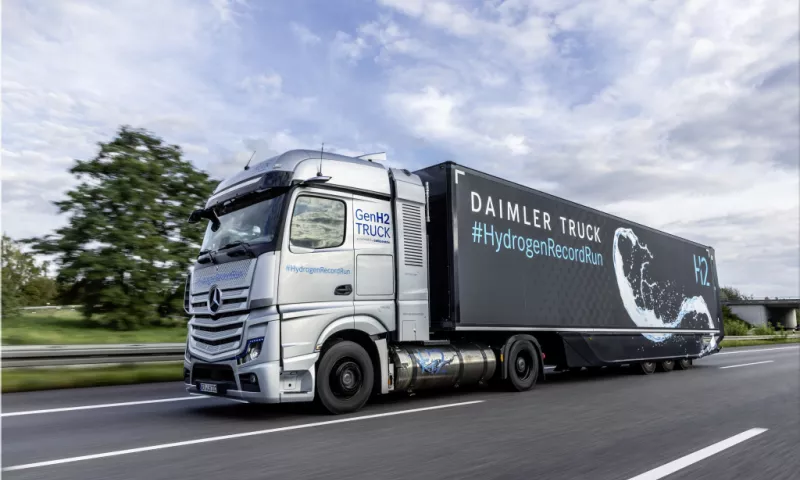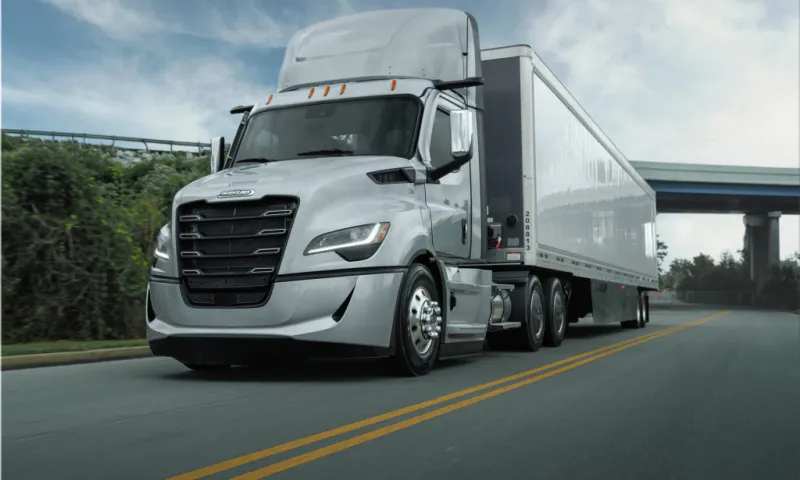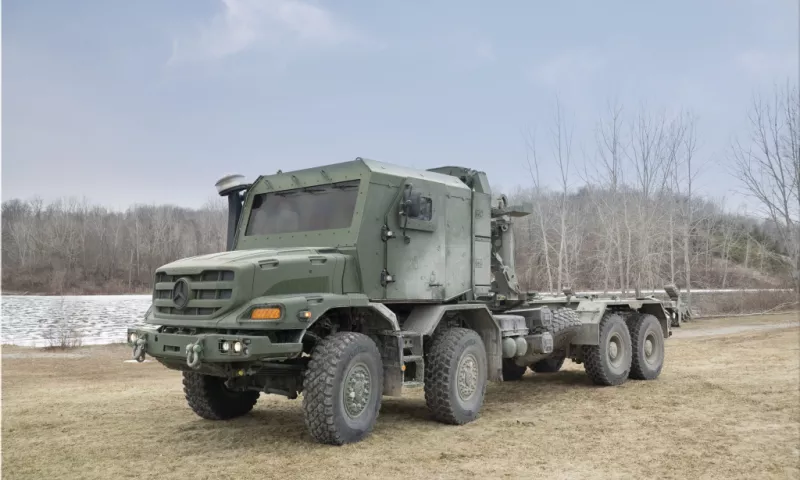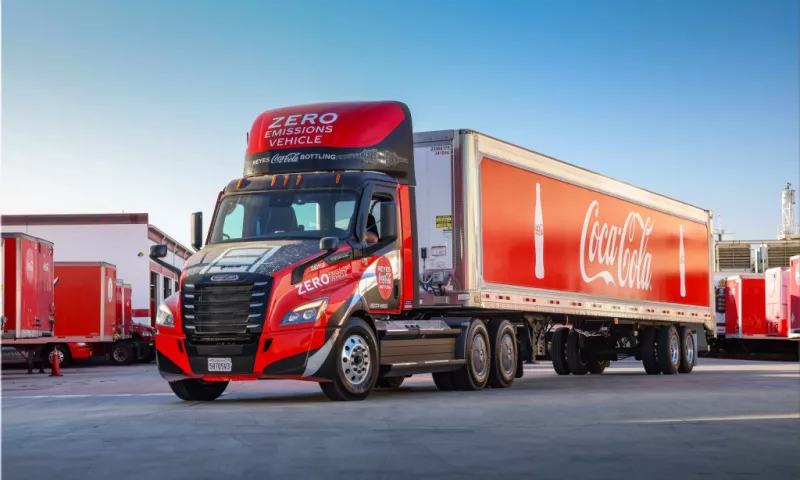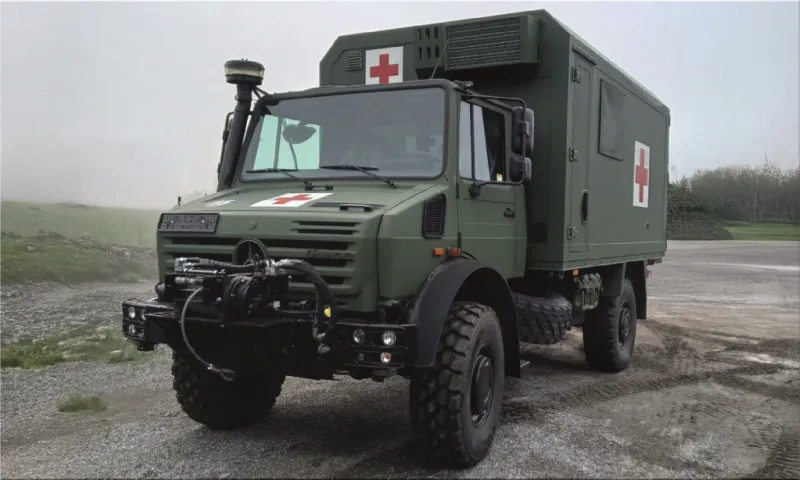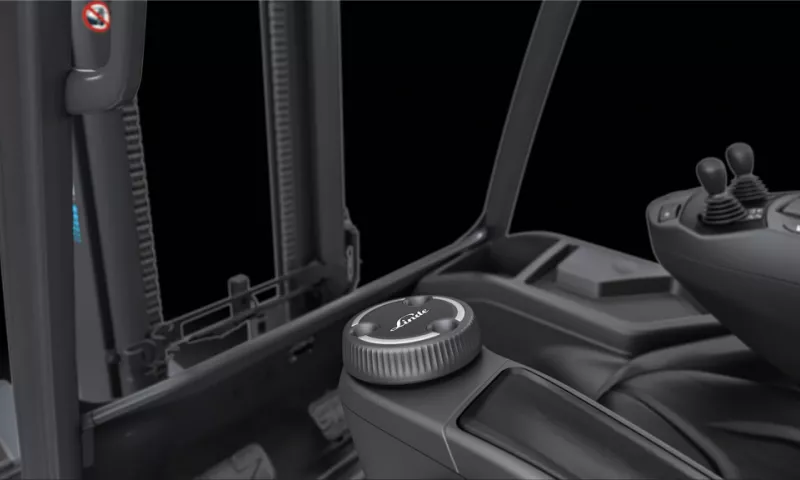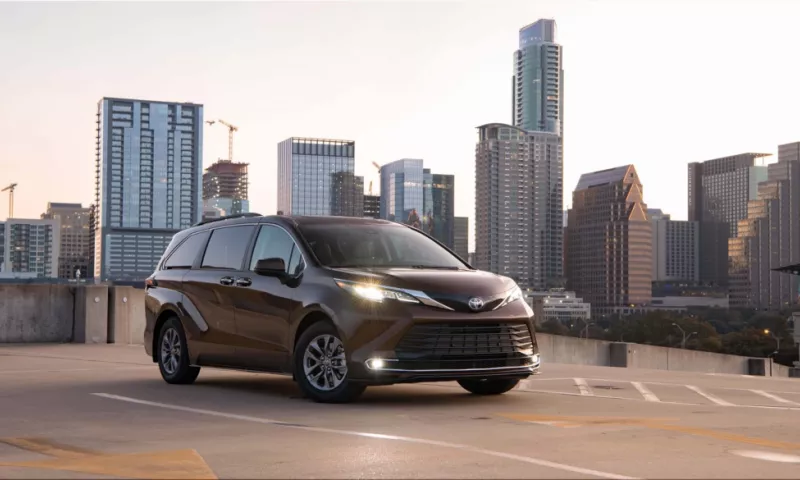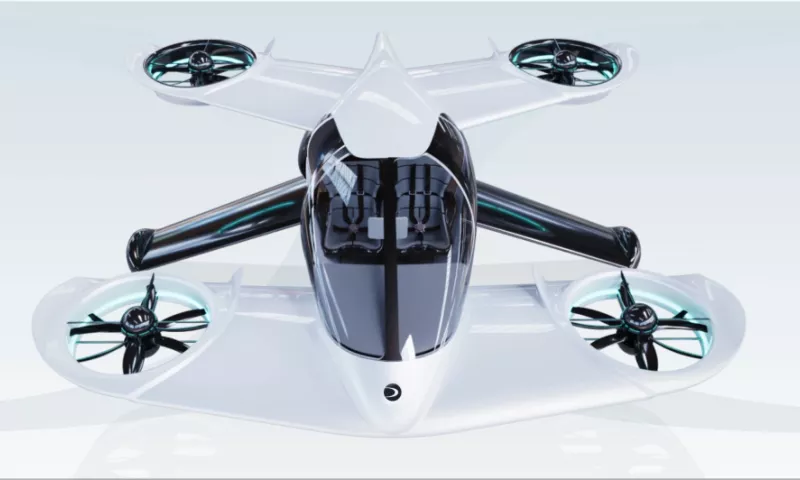A Dual-Vehicle Strategy for Extreme Events
The Lünen fire department has added a Unimog U 5023 to its fleet. The truck joins a modernized Unimog U 1550L from 1987. Together, they strengthen response capacity for forest fires, floods, and storm damage. This move addresses rising climate challenges in North Rhine-Westphalia, where both drought and heavy rainfall events now pose higher risks.
Why the Unimog U 5023 Matters
The Unimog U 5023 is built for extreme conditions. Its all-wheel drive, differential locks, and high ground clearance allow entry into areas other trucks cannot reach. Even with a 3,000-liter water tank and 120 liters of foam compound, the truck maintains full off-road capability.
Key operational advantages:
- TireControl Plus system adjusts tire pressure for sand, mud, or asphalt.
- Four front spray nozzles protect the vehicle when crossing burning terrain.
- Roof hatch and water cannon allow firefighting while driving.
- Heat-protected lines reduce damage risk during fire operations.
These features improve firefighter safety and speed during vegetation and forest fires.
Schlingmann’s TLF 3000 VARUS Conversion
German bodybuilder Schlingmann upgraded the U 5023 into a TLF 3000 VARUS firefighting truck. The conversion focuses on water capacity, quick deployment, and field endurance:
- Water tank: 3,000 liters.
- Foam compound: 120 liters.
- Centrifugal fire pump: FPN 10-3000, up to 3,000 liters per minute.
- Water cannon: Up to 2,000 liters per minute.
- Side compartments: Storage for hoses, breathing equipment, tools, and generators.
- LED mast lighting: Full area illumination at night.
This modular setup allows rapid “pump and roll” operations, where the truck extinguishes fires while in motion.
Local Conditions Demand Versatility
Lünen’s geography increases fire and flood risks. The city sits between the Ruhr area and Münsterland. It faces two natural threats:
- Floods – Ten major floods hit Lünen in the 20th century. Both the Lippe and Seseke rivers are classified as “risk waters”.
- Forest fires – Hot, dry summers now endanger the Cappenberg Forest, one of Münsterland’s largest woodlands.
A mixed terrain of rivers, forests, and urban zones makes a dual-fleet strategy efficient. The U 1550L covers proven ground while the U 5023 tackles extreme and remote scenarios.
Comparative Data: U 5023 vs. U 1550L
| Feature | Unimog U 5023 (2025) | Unimog U 1550L (1987, modernized) |
|---|---|---|
| Water capacity | 3,000 liters | Smaller tank capacity |
| Foam compound | 120 liters | Limited |
| All-wheel drive | Yes, with TireControl Plus | Yes, older system |
| Off-road clearance | Over 35° approach/departure | Lower than U 5023 |
| Lighting | LED mast and ambient lights | Basic lighting |
| Fire pump capacity | 3,000 liters/min | Lower output |
| Role | Forest fires, floods, storms | Backup and complementary support |
The new Unimog doubles operational coverage without retiring proven assets.
